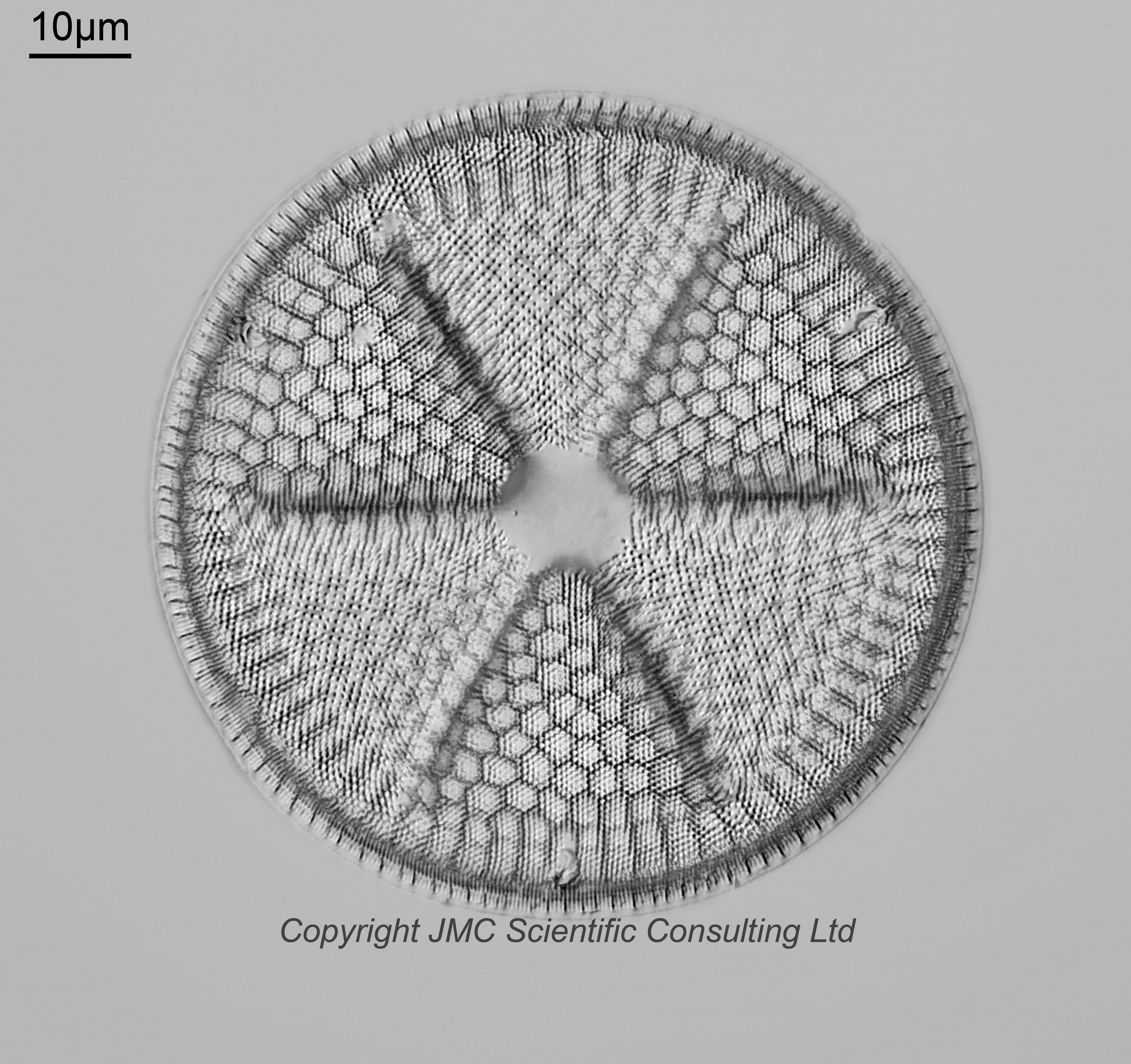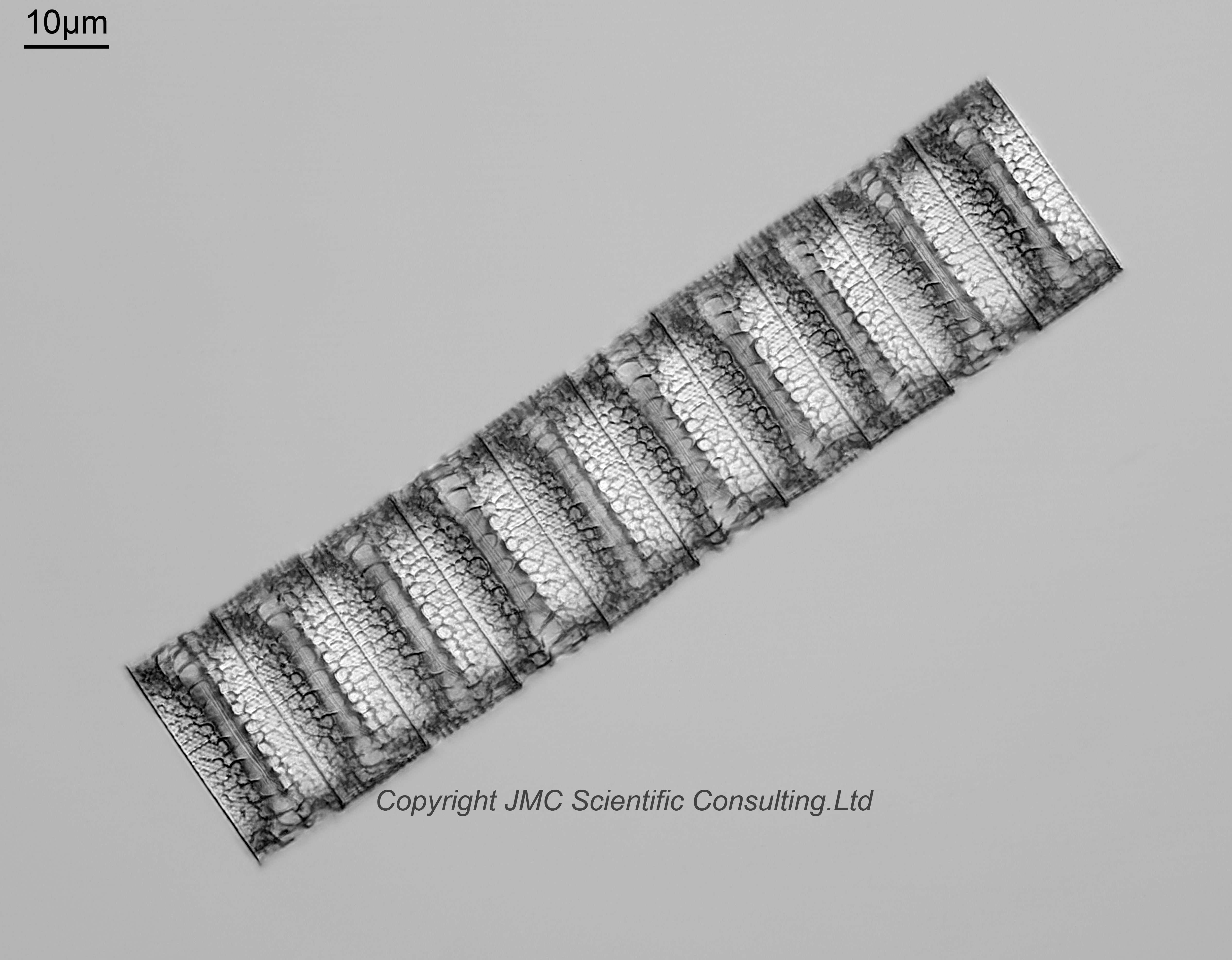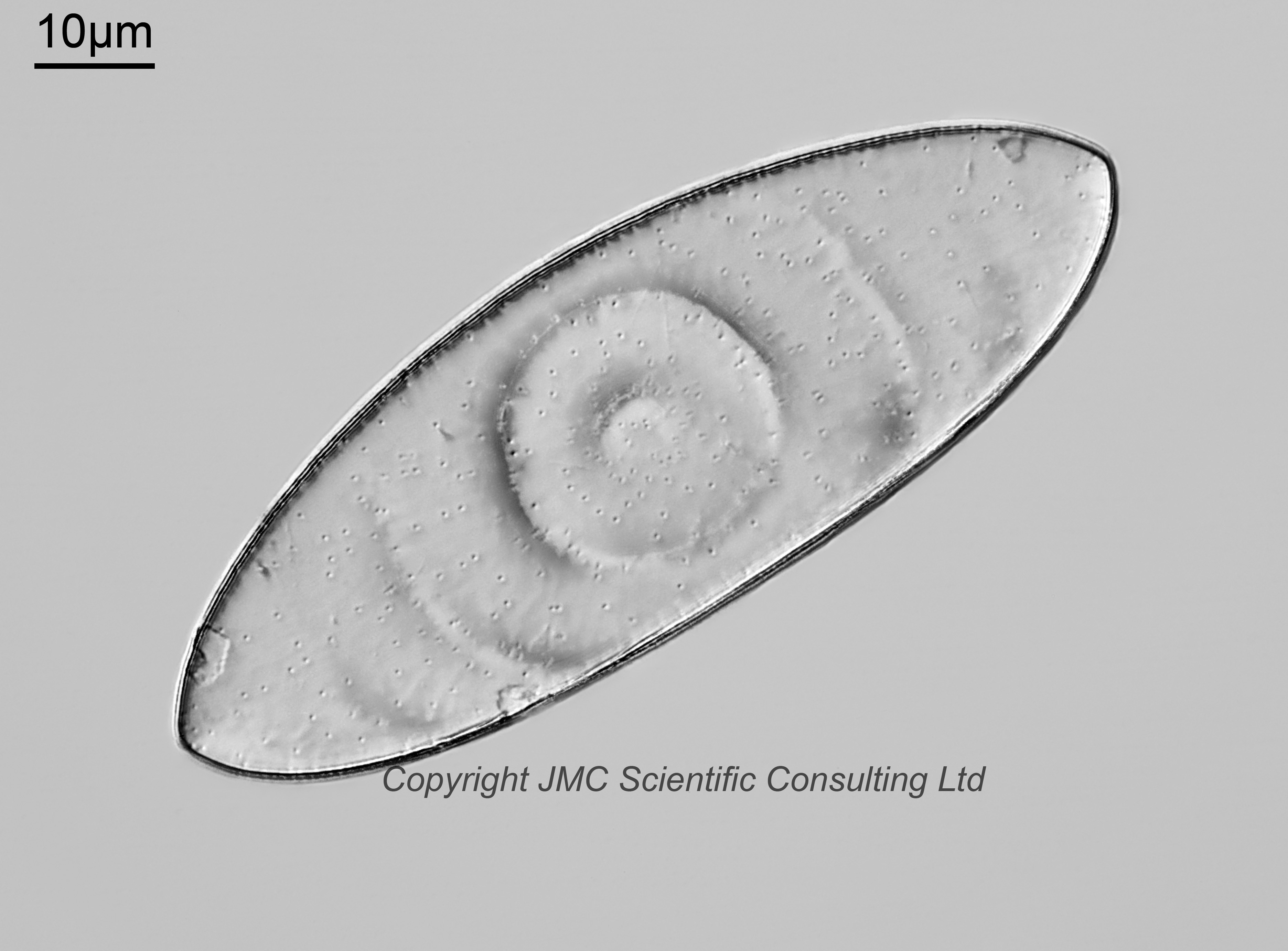















A second strew slide from Richmond, Virginia, USA. Wide range of species present. Prepared by Samuel Henry Meakin, and mounted in Styrax. Olympus BHB microscope using 450nm LED light. Mostly with a 63x Leitz Pl Apo 1.4 objective, oil immersion. Olympus Aplanat Achromat condenser, oil immersion, oblique lighting unless noted. 2.5x Nikon CF PL photoeyepiece. Monochrome converted Nikon d850 camera. Images stacked in Zerene (Pmax).
For identification of the diatoms I used various sources including the following;
Miocene Diatoms from Richmond, Virginia, George W. Andrews, Journal of Paleontology, Vol. 60, No. 2 (Mar., 1986), pp. 497-538 (42 pages).
Andrews, G.W. (1976). Miocene marine diatoms from the Choptank Formation. United States Geological Survey Professional Paper 910: 1-41, 2 figures, 1 table, 7 plates.
Fossil marine diatom resting spore morpho-genus Xanthiopyxis Ehrenberg in the North Pacific and Norwegian Sea, Itsuki Suto, Paleontological Research, 8(4) : 283-310.
Some identifications are more tentative than others, so keep that in mind.
Actinoptychus senarius. Various examples on the slide with slightly different appearances.
Actinocyclus ellipticus. Not seen this before but it is quite a distinctive species.
Paralia sulcata (?). Side on view of a stack of diatoms. I am not sure this is Paralia sulcata though (although I am fairly certain it is a Paralia of some time) so have left this with a question mark.
Stephanopyxis corona. Various examples on the slide. Not the easiest to stack, and being honest, I don’t think these stacks do them justice.
Paralia complexa (?). Another one which is new to me. I have left it with a question mark because of this.
Goniothecium rogersii. A distinctive species and with a few on the slide.
Xanthiopyxis sp. Again various ones on the slide with different shapes.
Actinoptychus marylandicus. A few on the slide, but this was the only one intact and not with other material obscuring it.
Stephanogonia actinoptychus. Viewed from above (‘outside’ if the diatom). Spikes/flanges on top of the structure which are a bit lost in the stack but could be seen in the individual frames.
Chaetoceros sp. Not sure as to the species of this (very tentative ID, Chaetoceros pliocenum).
Biddulphia rhombus (?). Reasonably sure of this, but haven’t seen one from this orientation before.
Eupodiscus argus. Old names – Aulacodiscus argus, Tripodiscus argus. 40x Leitz Pl Apo NA 1.00 oil immersion objective with brightfield lighting. Apparently it is unusual to see these intact from this location. This was the only intact one on the slide.